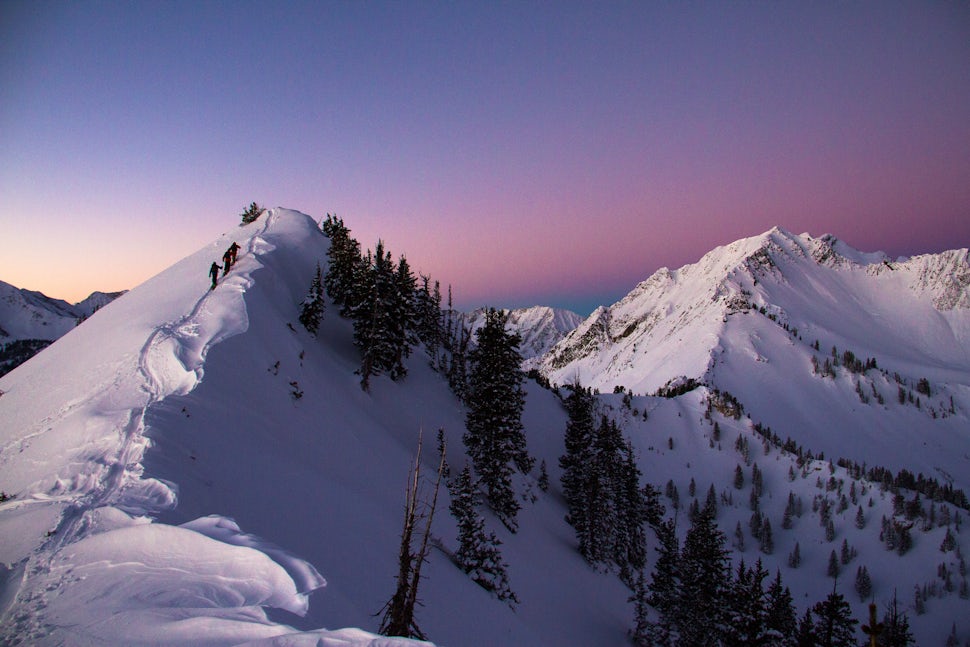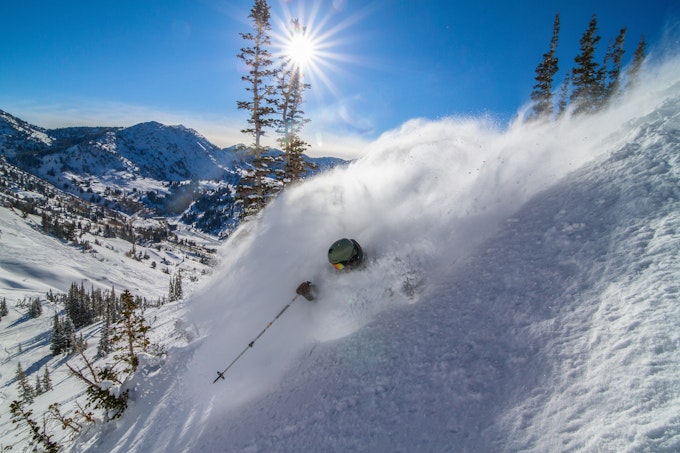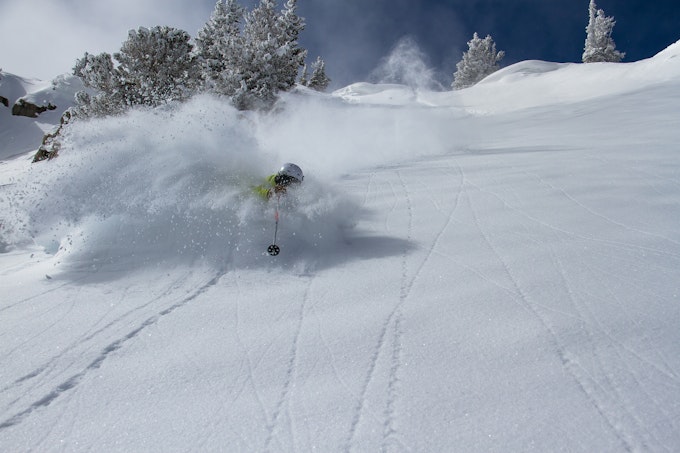6 Things You Need To Know Before You Start Backcountry Skiing
Ready to ditch the lift lines and earn your turns?

Backcountry skiing or snowboarding is an amazing way to experience nature at its finest. One of the most liberating activities on the planet, backcountry skiing and snowboarding takes place in terrain outside of ski resort boundaries. The freedom to explore mountains and score untracked snow is just a quick hike away. But how does one start backcountry skiing? There are many factors to consider. Heading outside of the ski resort means that there is no ski patrol or avalanche control work. This drastically increases risk and consequences of an accident. How does someone who is new to the sport learn how to read the snowpack and choose safe routes to hike and lines to ride? How do you know what gear to get and how to use it correctly? These choices, not to mention the potential danger of entering the backcountry, might seem daunting to a newcomer to the sport. Luckily, there are many great resources in place to help you make informed decisions about the backcountry and stay safe in avalanche terrain. In no particular order, here are six things to know and do before heading into the backcountry.
1. Find a mentor.
The best way to gain backcountry knowledge is to go with someone more experienced than you. For many aspiring backcountry skiers, this will be easy. Chances are, your know someone who already skis or snowboards in the backcountry. Heading out riding with them is a smart way to begin backcountry travel. Ask as many questions as you can. Soak up their knowledge of the backcountry.
2. Get the gear.
There is a plethora of gear available for backcountry skiing. Gear up with the essentials. The three most essential safety items are a beacon, a probe, and a shovel. An avalanche beacon, also known as an avalanche transceiver, is a small piece of electronic equipment to be worn underneath your jacket. As a transceiver, it emits as well as receives a signal to other avalanche transceivers. In the event of an avalanche burial, transceivers let you locate the burial victim. An avalanche probe helps you locate how deep the victim is buried after finding their location in the slide. An avalanche shovel is a small, lightweight, collapsable shovel to dig out the victim. Having a ski or snowboard setup that allows you to hike uphill is necessary as well. Skiers use AT (alpine touring) bindings that allow the heel to unlock and lift. The heel then locks prior to skiing. Climbing skins are temporarily adhered to the base of the skis. This lets the skier glide forward, but not backward, making hiking possible. Snowboarders use split boards. Split boards are specialized snowboards that split apart lengthwise, mimicking skis for uphill travel. There are many offerings for backcountry ski and snowboard equipment, so make sure you find one that is correct for your skiing and snowboarding needs. Prioritize getting quality safety gear over other backcountry equipment. Hopefully you’ll never have to use it, but it could save your life or your partner’s life.

3. Take a level 1 avalanche class.
Avalanche classes are amazing bases or knowledge for starting backcountry travel. Classes are typically three days long, and cover the basics of route finding, risk mitigation, and avalanche safety. The term “level 1” refers to the class being the base education for traveling in avalanche terrain. These classes are a great way to start learning about avalanches.
4. Familiarize yourself with the avalanche forecast, and know before you go.
Most places in the world world have some sort of avalanche forecast. Reading and paying attention to the forecast is a great way to plan your day in the backcountry. Avalanche forecasts are submitted by professionals making observations and gathering real-time data in the field. “Know Before You Go” is an avalanche safety campaign. Its principle is that you should have a good understanding of what the current conditions are, and know what the snowpack is doing before heading out into the backcountry. Monitoring the avalanche forecast daily throughout the ski season will give you a great idea of what the snowpack is doing and what aspects are safe to ride on a given day. It is important to note that the backcountry is a fickle place. Just because the avalanche forecast says that a certain aspect has a low avalanche risk, doesn’t always mean it’s safe to ride. Always make sure you’re using your knowledge and experience to gauge risk in avalanche terrain.

5. Practice.
Get out into the backcountry and use your knowledge and gear to make smart decisions of where to go and what to ride on a given day. Dig snow pits and look at the layers in the snowpack to see how they are reacting with each other. Do fake burial scenarios with your buddies and your avalanche beacons to practice using them. Again, hopefully you’ll never be involved in an avalanche where you actually have to use your beacon, but it is good to be prepared.
6. Start small, and don’t be afraid to say “no”.
One of, if not the most important things to know in the backcountry is when to back down from your objective and say “no”. You can make hundreds of good calls in the backcountry, but all it takes is one bad call to cause disaster. Don’t be afraid to say no if the conditions aren’t right for riding a particular line or face. On days when the avalanche danger is high, you can still have awesome days in the backcountry by sticking to low-angle terrain where an avalanche won’t happen.
Cover photo: Sam Watson
We want to acknowledge and thank the past, present, and future generations of all Native Nations and Indigenous Peoples whose ancestral lands we travel, explore, and play on. Always practice Leave No Trace ethics on your adventures and follow local regulations. Please explore responsibly!
Do you love the outdoors?
Yep, us too. That's why we send you the best local adventures, stories, and expert advice, right to your inbox.







